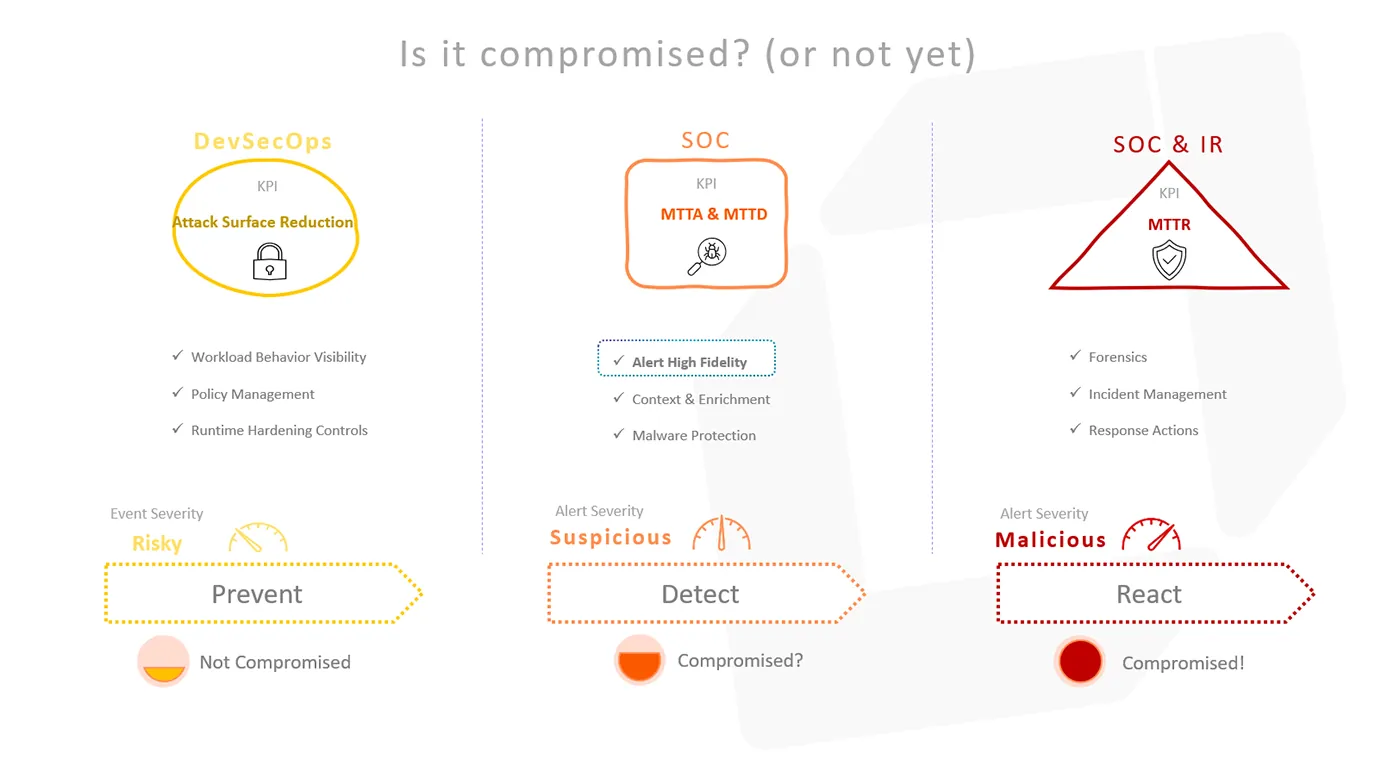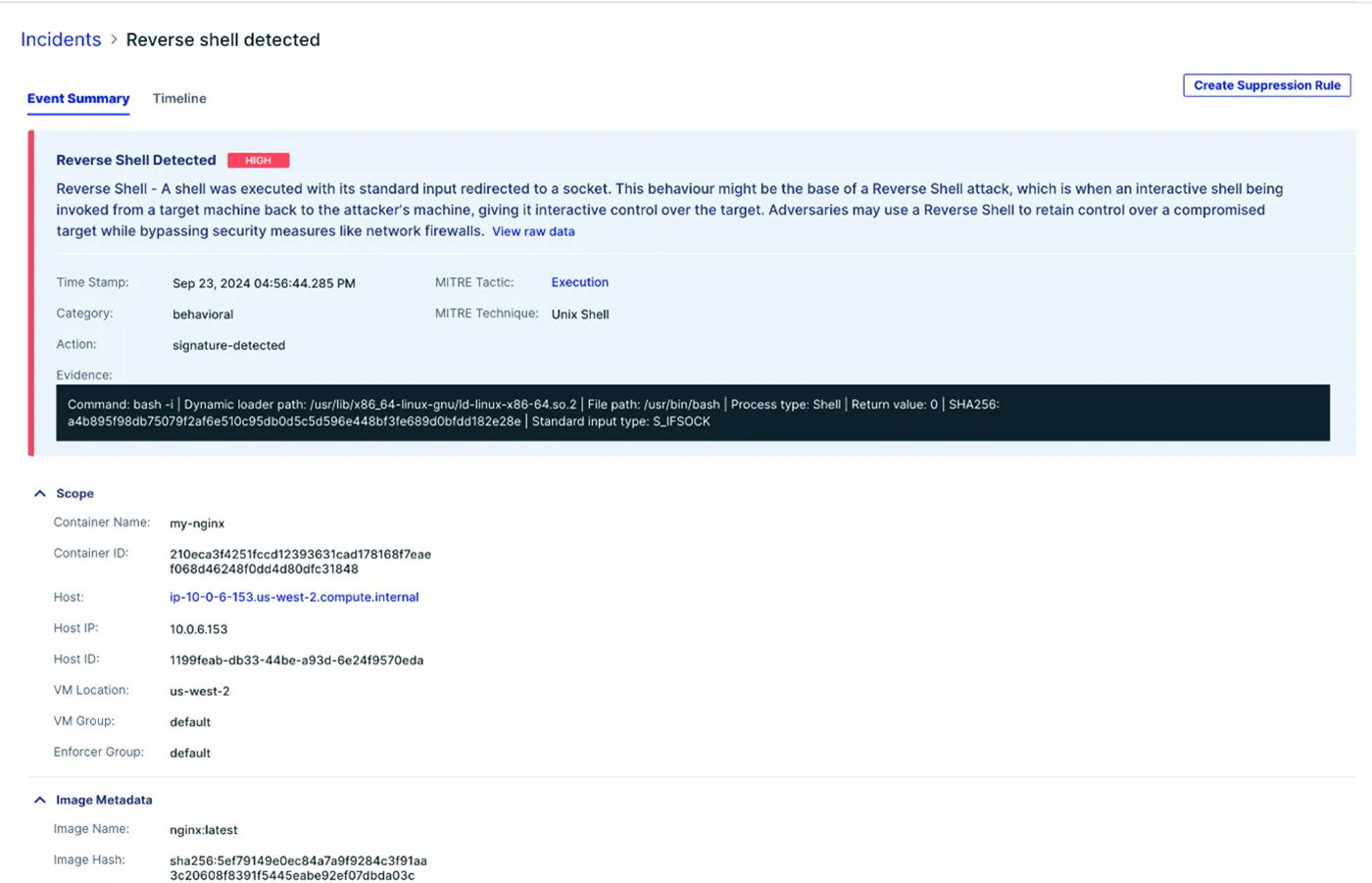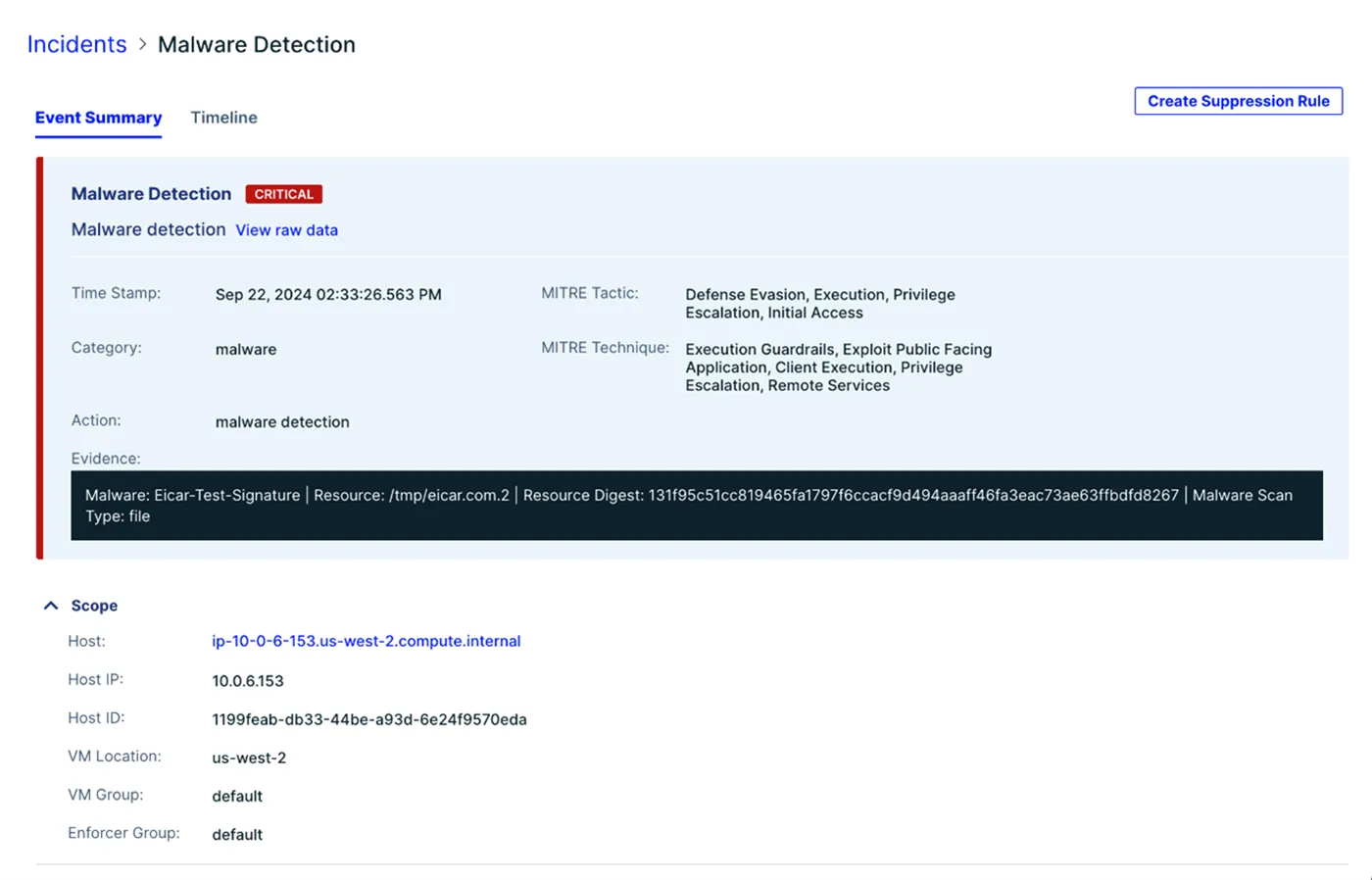In the dynamic world of cloud native, security teams are inundated with an overwhelming flood of alerts—far too many for any team to realistically manage. This constant barrage creates a risky dilemma: sift through the noise or silence alerts, risking missing real attacks. Like Johnny Cash’s “Walk the Line,” security teams must strike a careful balance—maintaining vigilance without becoming desensitized to the very warnings meant to protect their running applications.
Runtime Security: A Team Sport Requiring High-Fidelity Incident Detection
When it comes to protecting applications in runtime, DevSecOps, SOC, and Incident Response (IR) teams each have distinct but interconnected roles and responsibilities that are critical to maintaining security.
DevSecOps is responsible for embedding security throughout the software development lifecycle, ensuring that known risks such as vulnerabilities, misconfigurations, and secrets are minimized before applications are deployed. They also focus on workload visibility, managing security policies, and implementing runtime hardening controls to reduce the attack surface and prevent unauthorized changes.
SOC teams, on the other hand, act as the organization’s front line of defense, monitoring the security posture in real-time, and detecting potential threats. SOC teams are responsible for reducing Mean Time to Detect (MTTD) and Mean Time to Acknowledge (MTTA) incidents. They require high-fidelity alerts that provide context and enrichment to prioritize legitimate threats and avoid alert fatigue.
When an incident is detected, IR teams step in to contain and remediate it. They perform forensic analysis and restore the environment to a secure state, aiming to minimize Mean Time to Resolution (MTTR).
Accurate and consistent threat detection is critical across all teams—not only to reduce noise and ensure timely response but also because each team is evaluated on different metrics. False positives can slow down DevSecOps and overwhelm the SOC, while false negatives can leave IR teams blind to active threats. Inaccurate findings, like false positives, can also threaten the credibility of the entire security team when they accidentally stop an application from going live in production. Without precise detection, these teams risk misalignment, delayed responses, and ultimately, compromised security.
The Aqua Approach: Categorizing Runtime Incidents to Reduce Noise and Improve Response
Aqua’s runtime security solution strikes the perfect balance in runtime threat detection, powered by real-world threat intelligence from Aqua’s Threat Intelligence Team, Nautilus. Leveraging over 150 applications deployed globally and our AI-powered honeypot network, Nautilus captures new threats, recording and analyzing tens of thousands of attacks each month. Through a multifaceted approach, Nautilus investigates how attackers evolve their techniques to exploit and breach cloud native environments. This threat intelligence is shared and mapped to industry frameworks such as the MITRE ATT&CK Containers Matrix and is continually fed into the Aqua platform to identify and protect against both known and novel threats.
With a consistent feed of real-world attack intelligence and nearly a decade of experience in cloud native, Aqua’s runtime threat detection engine is sensitive enough to identify real threats that could compromise business operations, but smart enough not to trigger a cascade of false positives. This precision ensures that security teams aren’t bogged down by unnecessary alerts, allowing them to focus on genuine risks. Aqua’s approach avoids being overly restrictive—maintaining business continuity—while still providing the most accurate and comprehensive protection to not leave organizations vulnerable to attacks.
Aqua’s runtime strategy centers on categorizing security events into three distinct types: Risky, Suspicious, and Malicious. This framework streamlines alert management and response by assigning severity scores to each event type, enabling teams to prioritize actions effectively and reduce alert fatigue while ensuring critical threats are addressed. It also helps bridge the knowledge gap by providing a heuristic approach that simplifies understanding the impact of individual Indicators of Attack (IoAs) and Indicators of Compromise (IoCs), empowering teams to respond more confidently even without deep security expertise.
- Risky Events: These events indicate deviations from cloud native security best practices that, while not immediately dangerous, increase the attack surface and can expose workloads to potential threats. For example, container drift, where containers intended to be immutable change at runtime, is flagged as a Risky event since it introduces the risk of attackers deploying new files or configurations. Aqua assigns these events a low severity score and logs them as recommendations for improving security posture without triggering alerts.
- Suspicious Events: These events represent abnormal behaviors that are likely associated with real threats, known as Indicators of Attack (IoA). For instance, a reverse shell is a Suspicious event because it suggests that an adversary may have gained control of a system. These events are assigned a higher severity score, and Aqua triggers runtime alerts, prompting teams to investigate and respond immediately.
- Malicious Events: These are confirmed Indicators of Compromise (IoC) where Aqua detects known malware, unauthorized access, or communication with malicious IPs or domains. Malicious events are assigned the highest severity score and require urgent attention. Aqua’s real-time alerts and detailed forensics enable teams to respond swiftly, contain the threat, and restore the environment to a secure state.
By categorizing events and applying tailored alerting logic, Aqua helps reduce noise and alert fatigue, making it easier for DevSecOps, SOC, and IR teams to focus on what truly matters. DevSecOps can harden security during development and continuously enforce policies during runtime. SOC teams benefit from high-fidelity, enriched alerts, enabling faster and more accurate detection. IR teams gain the visibility and context needed to conduct effective forensic analysis and respond to incidents swiftly.
Aqua’s high-fidelity incident detection approach ensures that runtime security not only provides robust protection but also avoids distracting teams and disrupting legitimate business operations. This helps organizations achieve a delicate balance—strengthening runtime application security while supporting seamless application performance and business continuity.
Say goodbye to alert fatigue and hello to focused, high-fidelity threat detection with Aqua. Learn how our categorization framework helps DevSecOps, SOC, and IR teams prioritize alerts, respond faster, and maintain business continuity—all without compromising security.





